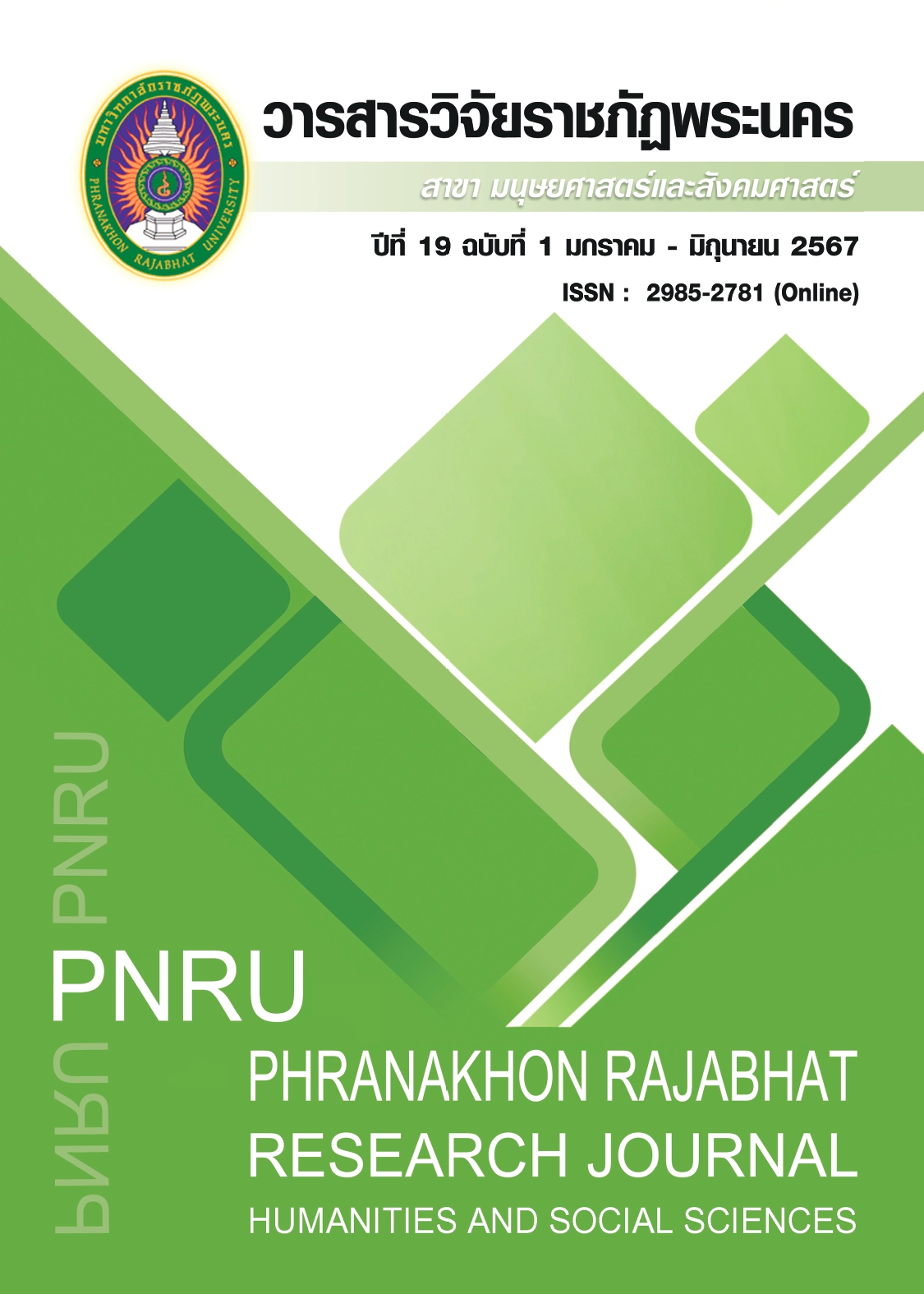FOOD TOURISM DEVELOPMENT IN NAKHON NAYOK PROVINCE
Main Article Content
Abstract
Objectives: 1) To create a street food tourism route in Nakhon Nayok Province. 2) To study consumer decision-making trends in traveling to consume products in Nakhon Nayok Province. 3) To find baseline data for the street food tourism route in Nakhon Nayok Province. This research is a mixed method research combining quantitative research with a sample group of 400 people and qualitative research by interviewing 10 restaurant operators. Data was analyzed using statistics, percentages, mean, and standard deviation. Content analysis statistics were also used. The research results are as follows: 1) The street food tourism route in Nakhon Nayok Province is as follows: Restaurant 1: Legendary Fresh Fish Noodle, Restaurant 2: Pa Tuk’s Grilled Chicken, Restaurant 3: Ratree Congee, Restaurant 4: Thanakorn Nakhon Nayok BBQ, Restaurant 5: Pad Thai Champion, Restaurant 6: Rad Na Yot Pak, Restaurant 7: Pa Daeng’s Som Tum, Ban Dong, Restaurant 8: Suan Si Thong, Restaurant 9: Khrua Lung Kang, and Restaurant 10: Sukea Boran Baan Mae. 2) Consumer decision-making trends in traveling to consume products in Nakhon Nayok Province are as follows: Consumers place the most importance on products (= 4.23). Therefore, operators must place importance on products, namely food, price, and physical appearance, which are the reasons for consumers’ decisions to purchase food. Operators and relevant government and private sector agencies must place importance on pricing so that it is appropriate for the quality of the food and not unfair to consumers. Relevant agencies must also provide support and organize the area into a street food zone. 3) Baseline data for the street food tourism route in Nakhon Nayok Province.
Article Details

This work is licensed under a Creative Commons Attribution-NonCommercial-NoDerivatives 4.0 International License.
Each publish articles were copyright by Phranakorn Rajabhat University
Any contents which appeared in each articles in the journal were authors personal opinion. It did not relate to Phranakorn Rajabhat University and other instructors in the university. Each authors would take responsibility on their articles. If there are any mistake, the authors will take responsibility themselves
References
Kivela, J. and Crotts, J. C. (2006). Tourism and gastronomy: Gastronomy’s influence on how tourists experience a destination. Journal of Hospitality & Tourism Research, 30(3), 354–377.
Nakhon Nayok Provincial Statistical Office. (2020). Nakhon Nayok Provincial Statistics Report 2020. National Statistical Office, Ministry of Digital Economy and Society.
Rand, G. E. D., Heath, E. and Alberts, N. (2003). The role of local and regional food in destination marketing: A South African situation analysis. Journal of Travel & Tourism Marketing, 14(3-4), 97-112.
Siriwan Serirat, Prin Laksitanon, and Suporn Serirat. (1998). Modern Marketing Management. Bangkok: Thira Film and Cytex Company Limited. Journal of Narathiwat Rajanagarindra University, Humanities and Social Sciences. 5(2), 184-195.
Siriwan Serirat, Suporn Serirat, Ong-art Pothawanich, and Prin Laksitanon. (2003). Modern Marketing Management. Bangkok: Thira Film and Cytex Company Limited.
Tourism Authority of Thailand. (2014). Annual Report 2014. Tourism Authority of Thailand.


